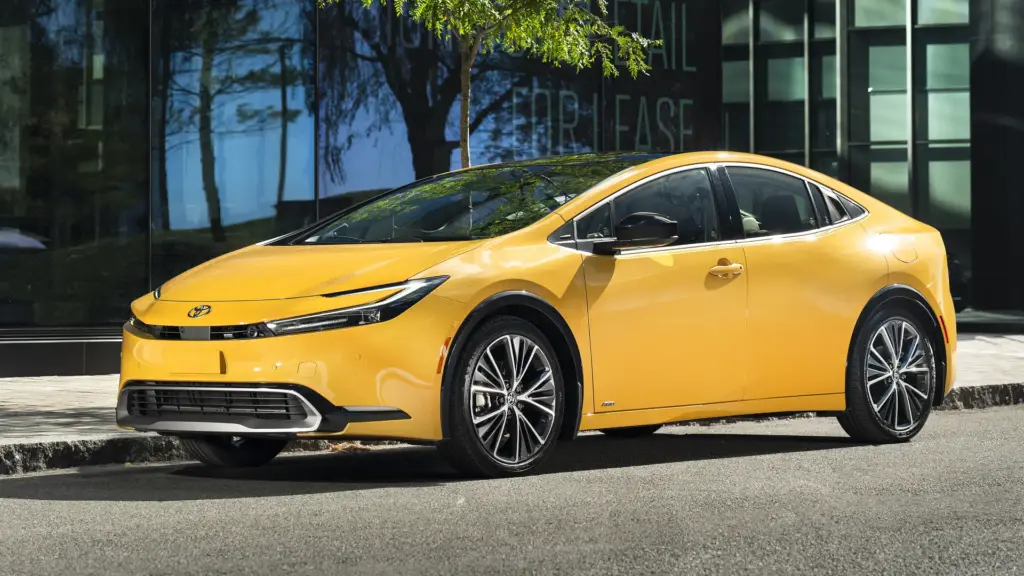
The Toyota Prius could make a surprise return to Australian roads after being absent since mid-2022. The decision to pull the hybrid pioneer from local showrooms came just months before the unveiling of the widely-acclaimed fourth-generation model, which boasts more attractive styling. Sean Hanley, Toyota Australia’s sales and marketing chief, expressed regret over the decision at the recent Tokyo Motor Show, stating he “would’ve loved to have taken [the Prius], in hindsight.”
Now, Australia seems poised to follow the United Kingdom’s lead in reviving the Prius, a move that coincides with the introduction of new emissions regulations. “I think it’s a wonderful-looking car, and spending the last couple of days in Japan, I’ve seen a few on the road; it’s very impressive,” Hanley told Drive in a follow-up interview. He added, “I’d like to revisit it because I think under the New Vehicle Efficiency Standard [NVES]… coming into place, particularly [in the] post-2027 period, it would be advantageous for us to re-look at it and see if we can make it work in our product line-up.”
New Emissions Standards and Market Dynamics
The New Vehicle Efficiency Standard (NVES) recently introduced in Australia imposes stricter emissions rules on new cars. These regulations penalize automakers for selling vehicles that emit high levels of CO2, which do not meet the government’s targets based on vehicle type and weight. As the standards tighten each year, adding hybrid or plug-in hybrid options like the Prius could help Toyota maintain compliance.
While the Prius may not match the popularity of models like the Corolla or RAV4, its inclusion in the lineup could be strategic. The price, however, remains a critical factor. The outgoing Prius was priced at $38,365 plus on-road costs for the base variant, significantly higher than a mid-grade Toyota Corolla hybrid sedan, which offers more equipment. The better-equipped i-Tech variant was priced near the top of the Camry range at $45,825.
Technological Advancements and Market Potential
In Europe, the Prius is rated for 71km to 86km of electric-only driving range in European WLTP lab testing, powered by a 2.0-litre petrol engine, electric motor, and 13.6kWh battery pack. Meanwhile, Toyota plans to introduce plug-in hybrid technology in Australia with the new RAV4, expected in 2026, offering up to 100km of claimed WLTP electric range from a 2.5-litre engine and 22.7kWh battery.
“I just think there’s an opportunity there for it, being potentially a plug-in hybrid or hybrid,” Hanley noted. “I think it would be advantageous for us under what we know today to be the New Vehicle Efficiency Standard … I think it’s got a place in our line-up.”
Historical Context and Future Prospects
The Prius has seen fluctuating fortunes in Australia. In its final full year, 2021, only 77 units were sold, a stark contrast to its peak of 3,413 sales in 2008. This decline was attributed to increased competition and changing consumer preferences. However, the evolving regulatory landscape and advancements in hybrid technology present a renewed opportunity for the Prius.
As Toyota evaluates the potential reintroduction of the Prius, the company must consider the vehicle’s positioning within its broader strategy to meet emissions targets and consumer demands. The decision will likely hinge on balancing cost, technology, and market appeal.
Looking ahead, Toyota’s potential revival of the Prius in Australia reflects a broader trend towards sustainable and efficient vehicles. As emissions standards continue to evolve, automakers will need to adapt their offerings to remain competitive and compliant. The Prius, with its legacy of innovation, may once again become a key player in this shifting landscape.






